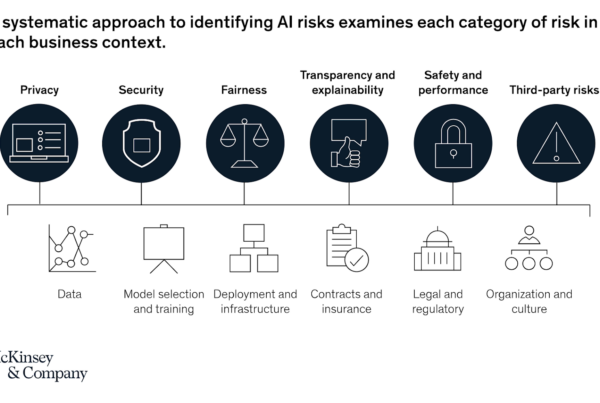It’s fair to say that all success-oriented companies want to meet the moment. Mission statements are written to inspire, actions are intended to be substantive, and solutions are designed to be visionary. Collectively, we are craving real heart- and mind-fulfilling change. However, we’ve reached a point where more action is needed to evolve ideas and words into transformative initiatives with staying power and measurable results.
“Moving from intention to results is the next evolution that we are looking for,” writes George Serafeim, Charles M. Williams Professor of Business Administration at Harvard Business School, cofounder of KKS Advisors, and the chairman of Greece’s National Corporate Governance Council. Serafeim and his research associates presented a large amount of information and findings around environmental, societal, and governance (ESG) data in a report for Harvard Business Review. ESG data encompasses information about a company’s initiatives around things like board member makeup, carbon footprint, labor policies, and more.
In this summary of “Social-Impact Efforts That Create Real Value,” I’ve extrapolated the points that I find most salient in creating a competitive, long-term ESG strategy.
Point #1: ESG is about more than box-checking
There is a corporate-bandwagon response that is happening as a result of social upheaval and civil unrest. Companies are rushing to adjust mission statements, corporate communications, and boards to meet the demands for more environmental and social responsibility. The challenge is for companies to move beyond checking performative boxes and window dressing. A new management paradigm for corporate leaders includes embedded ESG considerations helps achieve superior performance through environmental sustainability, social responsibility, and good governance focuses — this must be made a priority for the CEO and executive leadership.
Point #2: ESG initiatives lead to real pay-offs
By committing to prosocial ESG issues, companies can experience real payoffs. Four of these payoffs include:
- Helps management reduce capital costs and improve the firm’s valuation because investors seek out companies with stronger ESG performance.
- Positive action and transparency on ESG issues protect companies’ valuation as global regulators and governments mandate ESG disclosures.
- Ensuring sustainable practices maintains shareholder satisfaction with board leadership.
- Matching supportive investors with management’s vision and plans for the future, buying into a long-term strategy for ESG practices.
Point #3: How to create a strong and strategic ESG program
Five actions that management can take to build a strong ESG program include:
- Adopting strategic ESG practices;
- Creating accountability structures for ESG integration;
- Identifying a corporate purpose and building a culture around it;
- Making operational changes to ensure that the ESG strategy is successfully executed; and
- Committing to transparency and relationship building with investors.
Serafeim and his associates found through their research that approximately 4,000 companies around the world and across industries, converged over the years between 2012 through 2019. This caused an increase in engagement around sustainability and governance activities. The downside with the convergence was a failure to show any differentiation.
The way to begin identifying ESG initiatives is by determining “where to play and how to win.” This is completely dependent on the industry and pertinent issues (e.g., low carbon economy vs. diverse organization).
An ESG issue will likely become financial material under certain conditions, including:
- When management and external stakeholders are able to easily gain insight into a company’s environmental or social impact;
- When the media and NGOs garner more power and attention so that politicians become more responsive;
- When companies lack the ability to effectively self-regulate; and/or
- When a company develops a differentiated product/service to replace a “dirty” or unsustainable way of doing business.
Point #4: Drive accountability and purpose by centering ESG within the corporate culture
A top-down strategy is not effective if it is not supported by a culture that rallies around it. Firms must nurture a sense of purpose so that the people who know the organization best perceive the meaning and impact of their work. Over the long-term, companies that effectively link strategy to purpose will reap profit and sustainability benefits.
Point #5: Investors find value in information about the purpose
By articulating their purpose and building a culture, companies can find success with the following conditions:
- Intention strategy to grow leaders within the organization, so that internal candidates may be promoted to the CEO role;
- Fair compensation structures; and
- Careful execution of mergers and acquisitions to avoid culture clashes.
Point #6: Operational changes must receive the support and resources necessary to successfully evolve
Successful implementation of an ESG strategy moves through the following three phases:
- An effort to reduce risk and ensure compliance with environmental regulations and other laws;
- Efforts to improve operating efficiency; and
- Efforts to innovate and grow.
This evolution is initiated by the centralization of ESG activities. The evolution is then furthered by decentralizing ESG activities and empowering corporate functions to take responsibility for them. Finally, decentralization requires appropriate support mechanisms; the long-term viability from an investor-perspective is an evolution of if the company can deliver on their stated purpose. To increase the odds, companies should ensure that the people who manage the most determinants of ESG performance have the capabilities and resources needed to get the job done.
Point #7: Common misconceptions
- The belief that a firm’s investor base is not subject to influence or control by management. (Corporate leaders can influence who buys its stock and change the base of shareholders as necessary.)
- The demands of sell-side analysts employed by big brokerage houses should determine what must be communicated.
- ESG metrics are sufficient for investors to integrate ESG considerations into their business analysis, valuation, and modeling. (Investors often struggle to embed metrics in financial models because it’s now clear what/how they can affect the financials.)
- ESG disclosure is transaction-based and can happen intermittently.
By focusing on the strategic vision and capabilities, companies can evolve a good intention into achieving and maintaining strong ESG performance. Measurements and reporting play a critical role in tracking this progress. Link to Article











